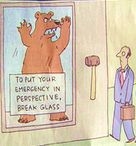As I said elsewhere, I'm an Emergency Medical Technician in New York State. Our protocol is ABC (Airway, Breathing, Circulation (bleeding)), in that order. For the unconscious patient, we first thrust the jaw forward. In virtually all cases, that separates the tongue from the soft pallet and opens the airway. Then we begin two puffs and 25 chest compressions, at the rate of 100/min. If we have our trauma bag (I always have mine in my car,) rather than give mouth-to-mouth we use the bag/valve/mask where squeezing the bag forces air into the lungs. But recent studies have shown compressions are more significant than forced air, so the American Heart Association has upped the rate of chest compressions (to keep the blood circulating) and reduced the number of forced breaths.billbolton wrote:CPAP doesn't "force air into the lungs" - the pressures are much too low for thatThe Choker wrote:Of course it helps force air into the lungs
CPAP is primarily for the purposes of "stinting" an airway that is blocked by muscular issues in the throat.
Many first-responder resuscitation protocols advise that a patient is physically arranged, if possible, so that they are lying on their side, to minimise the risk of airway blockages
Cheers,
Bill
Also, our protocol requires we have the patient supine (on their back) in most cases, especially when performing CPR.














